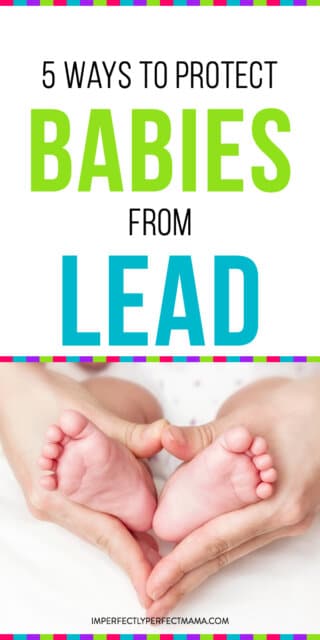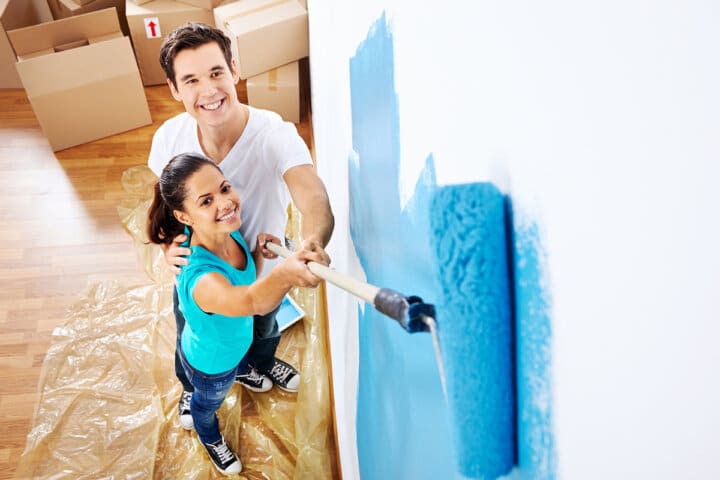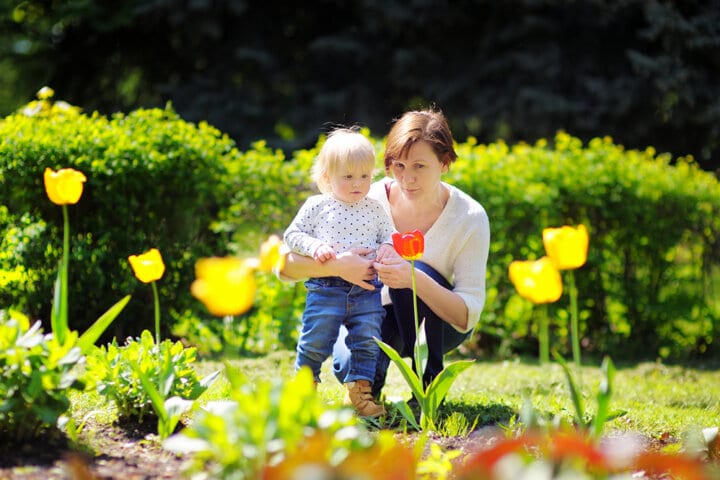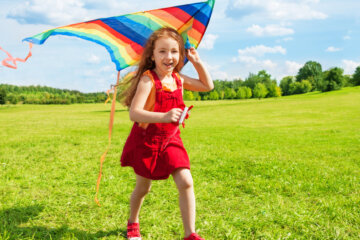You may remember the Flint, Michigan water crisis of 2014-2015.

This tragedy lead to thousands of children being exposed to lead through their tap water.
The problem is, lead toxicity is irreversible.
Lead affects many major organ systems in the body, including the brain and nervous system.
We all want to keep our kids safe from toxic chemicals such as lead.
Many people are most familiar with old water pipes as a source of lead exposure.
But most often, water isn’t the primary source of lead poisoning for kids!
I have a PhD in chemistry and spent years studying how to protect your family from dangerous chemicals, from pesticides to medicines passed through breastmilk.
In fact, I’ve written a handbook outlining how to protect your kids from toxic chemicals throughout your home!
The CDC says there is no safe level of lead exposure, so it’s important to make sure you protect your family from it.
Here, I’ll share five ways for you to keep your kids safe from lead.
Test Paint for Lead
Do you know what year your house was built in?
If it was built in the United States before the early 1980s, there’s a good chance it contains lead paint. And the older your home is, the more the likelihood of finding lead-based paint increases.
Where I was originally from, there were very few older homes, so we never considered lead paint. But when I moved to a new state, there were old houses and apartments everywhere.
Fortunately, it’s pretty easy to test for lead. Just go to Home Depot or a similar store and buy a lead test kit.
You can check several surfaces, but it’s important to note that lead paint is most likely to be found at window sills and door frames.
What to Do If There’s Lead Paint in Your Home

If a lead paint test is positive, it’s important that you take the right next steps. Otherwise, your family will be more at risk than if you just left the paint alone!
1. DO NOT Sand Off Old Lead Paint
I know, your first inclination upon learning you have lead in your home is probably to get it out as fast as you can. But don’t sand the paint away! I cannot emphasize this enough.
Think about it: You can be exposed to lead orally and by inhalation.
If you sand down the paint, you’ll make millions of tiny, breathable particles of lead dust.
There is no good way to get this dust completely out of your home. I have heard really sad stories
If you can afford it, the ideal way to deal with lead paint in your home is to hire a certified lead paint lead abatement contractor.
This person can remove the paint safely without leaving lead dust everywhere.
The problem is, lead abatement will probably cost tens of thousands of dollars. Fortunately, there’s an easier (and cheaper) way to make your home safer.
Simply repaint over lead painted walls yourself.
If there are big chunks of paint peeling or flaking, take it off with your hands, but otherwise leave the old layer alone. Repainting will encapsulate the lead paint and greatly reduce exposures.
2. Don’t Let Babies Chew on Windowsills
Teething babies, just learning to pull up and stand, are the perfect height to grab onto low windowsills.
Even if you’ve painted over old paint, chewing can break down into old layers of lead paint, allowing your little one to be exposed.
Make sure you provide plenty of teething toys and opportunities so they’re not tempted by the windowsill.
3. Vacuum and Dust Frequently
Often, it’s not large chunks of paint that are the problem, it’s dust.
Even if you don’t sand your walls, paint degrades over time and breaks down into dust. When children play on the floor (as they often do), they can inhale this dust (or even eat it, if they put any toys in their mouth).
Regular dusting and vacuuming can make sure kids’ exposure to lead dust is minimized.
Avoiding Lead Found in Soil

If you live in an old industrial or urban area, or if you live in an older home, there is a good chance there is lead in your soil too.
Just like with lead paint, ingesting or breathing in dust from this soil leads to lead exposure.
Luckily, there are a few ways to protect your kids from lead in soil (besides the obvious “Don’t let them eat dirt”).
4. Take Shoes Off at the Door
Remember how we said that kids get exposed to chemicals through the dust and dirt on your floor?
Taking your shoes off at the door can really help to keep soil from being tracked into your home.
Honestly, regardless of whether you have lead in your soil, this is a good practice to start!
5. Build a Raised Garden Bed
If you plan on gardening, don’t grow your plants in the original soil.
Whatever toxins are in your soil will be uptaken by plants, and when you eat your produce, you’ll be eating those harmful chemicals in turn.
Instead, build a raised garden bed and add new soil (from a trusted source) to it.
This way, you will be providing tasty, nutritious, and safe vegetables for your family.
Conclusions on Avoiding Lead Exposure for Your Family
If you’re in a home that’s less than 35 years old, chances are you don’t have much to worry about with lead exposure.
But if you’re in an older home or live in an old industrial area, this is a potential hazard you need to address.
If you’re looking for more details on protecting your family from lead exposure, or if you’re concerned about other toxic chemicals in your home, make sure to check out the Chemical Safety Handbook for Families.




Leave a Reply